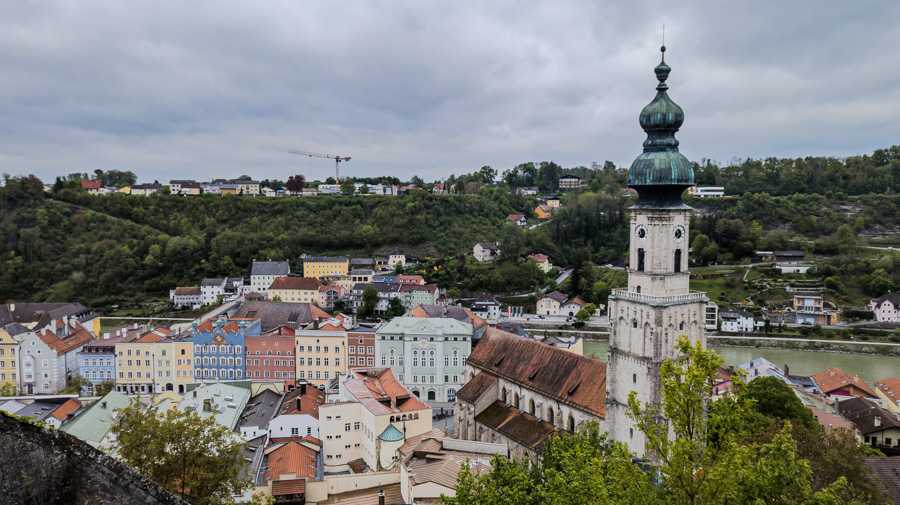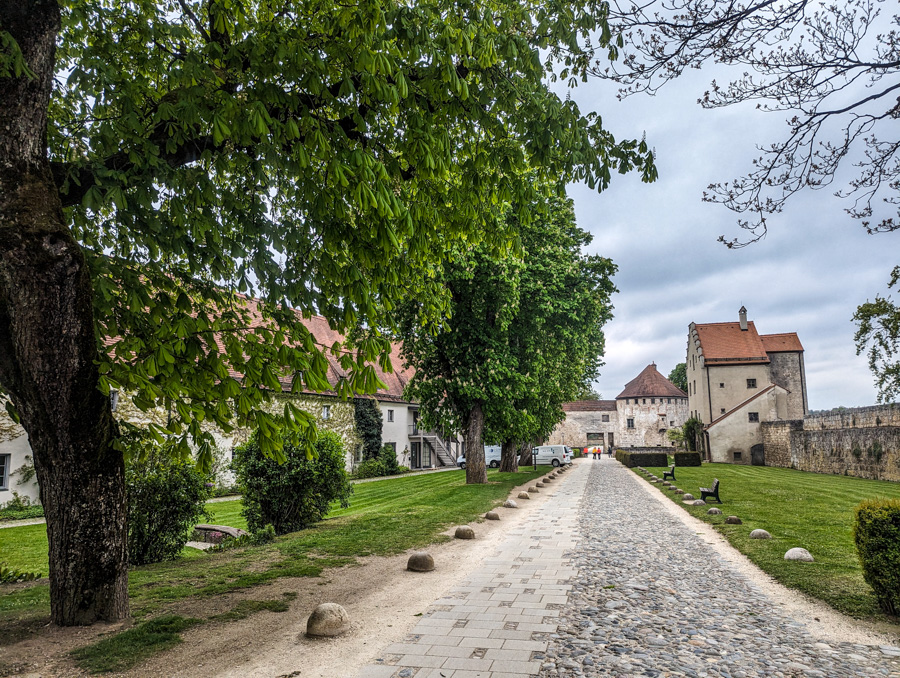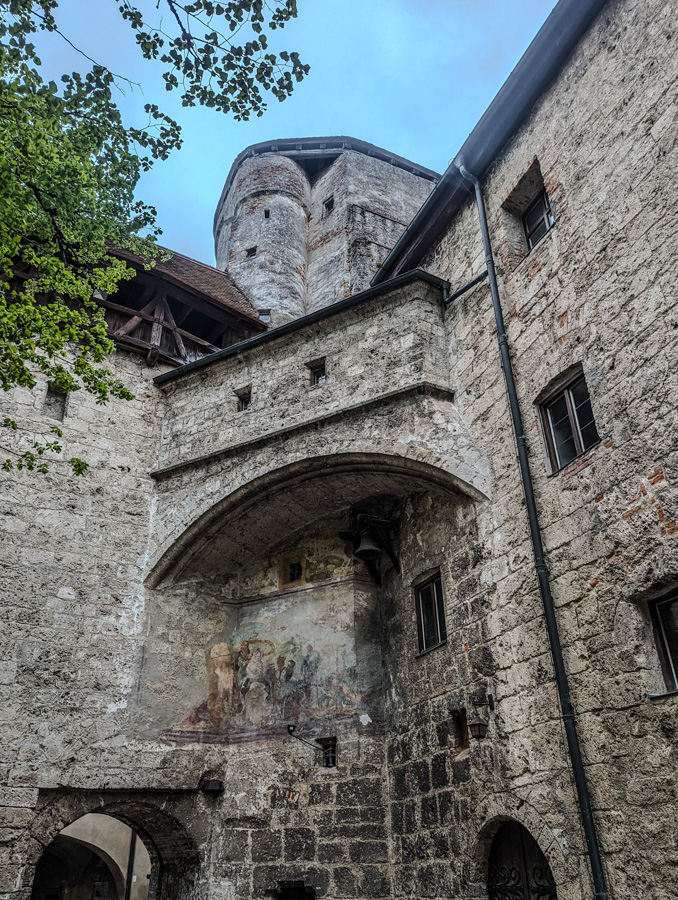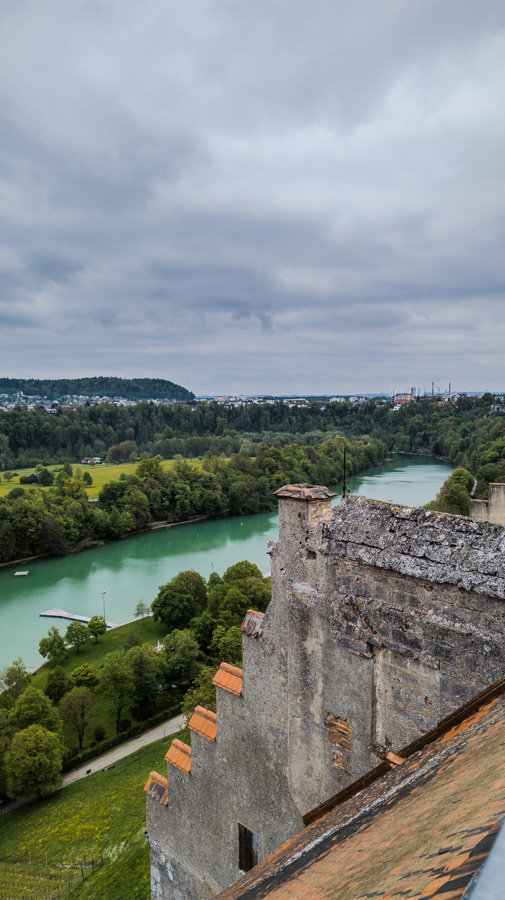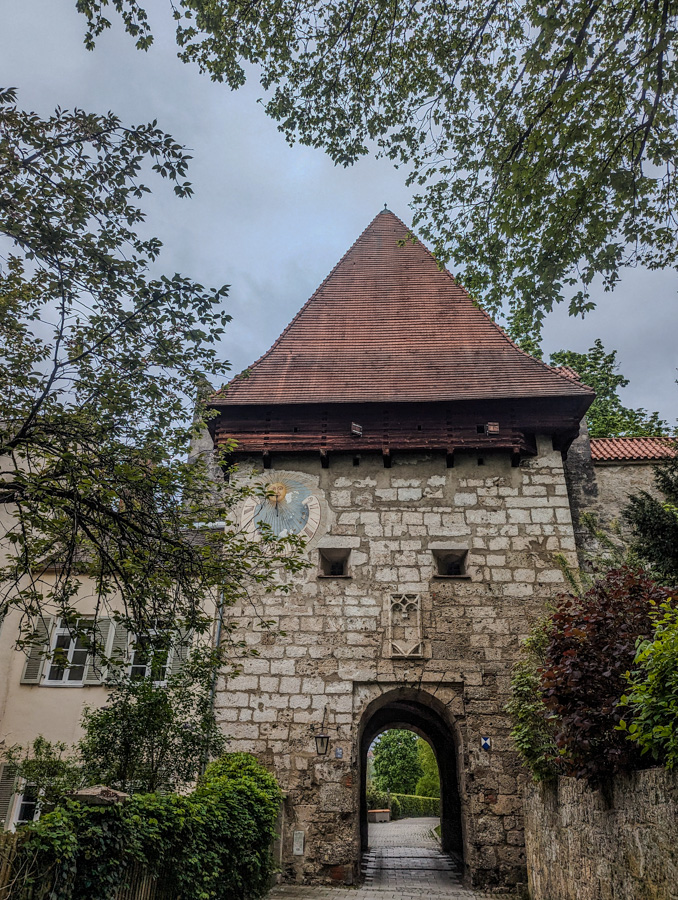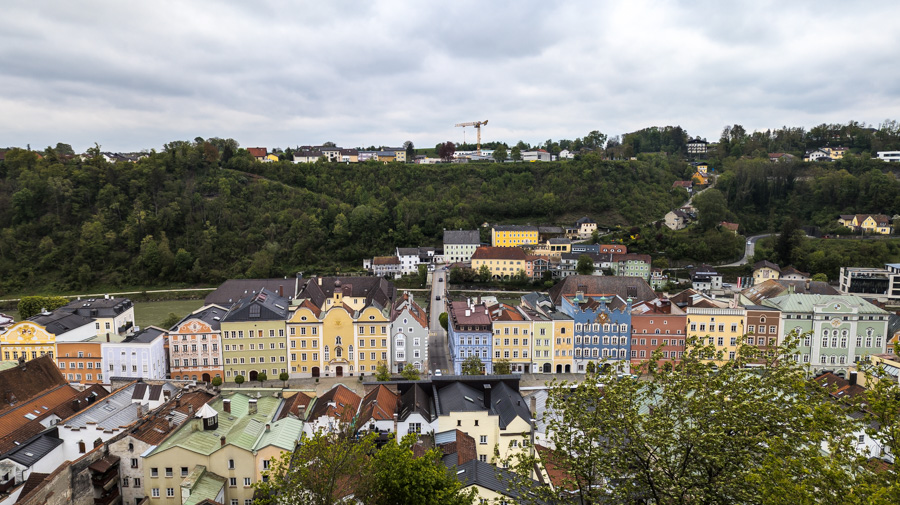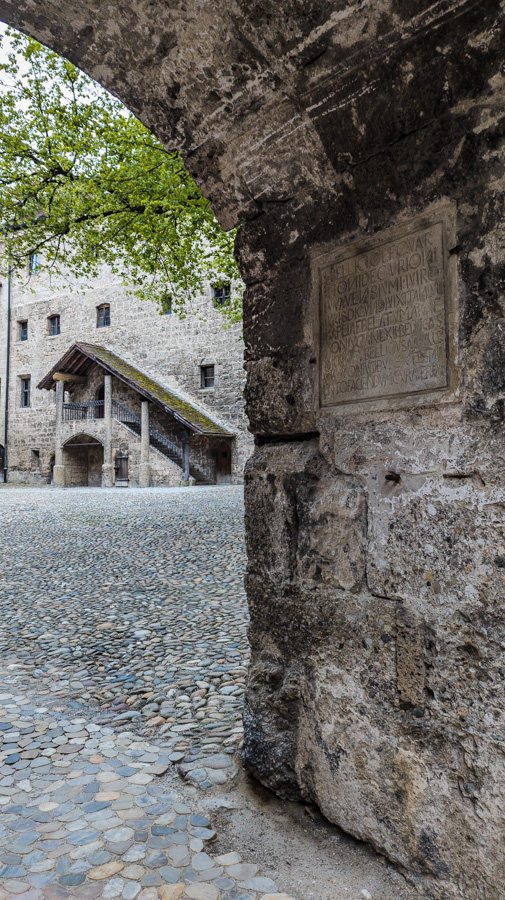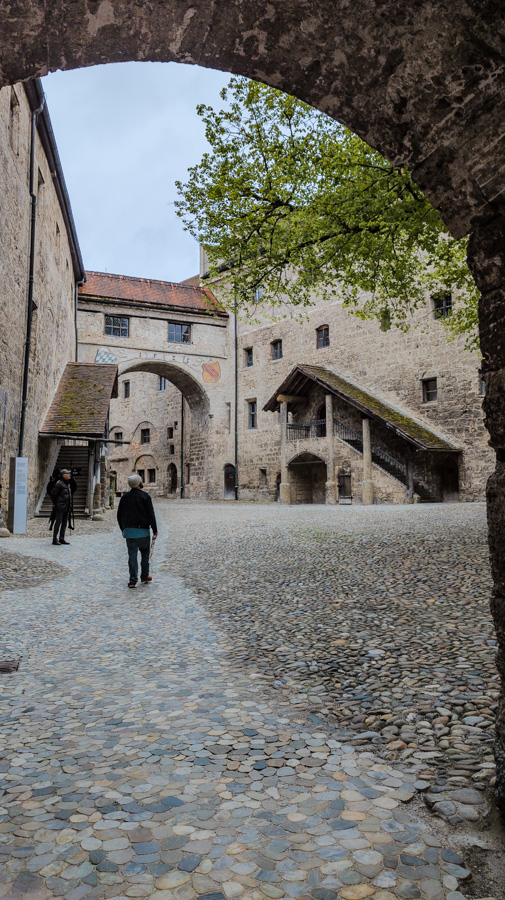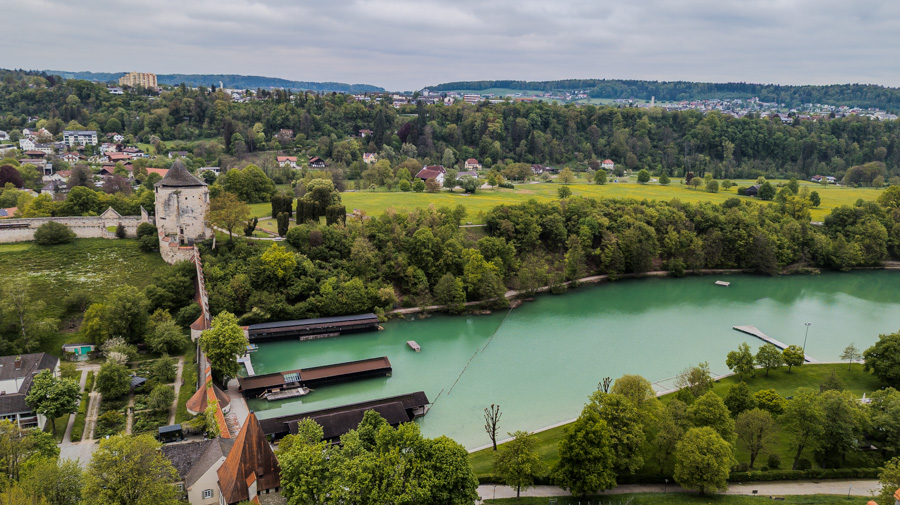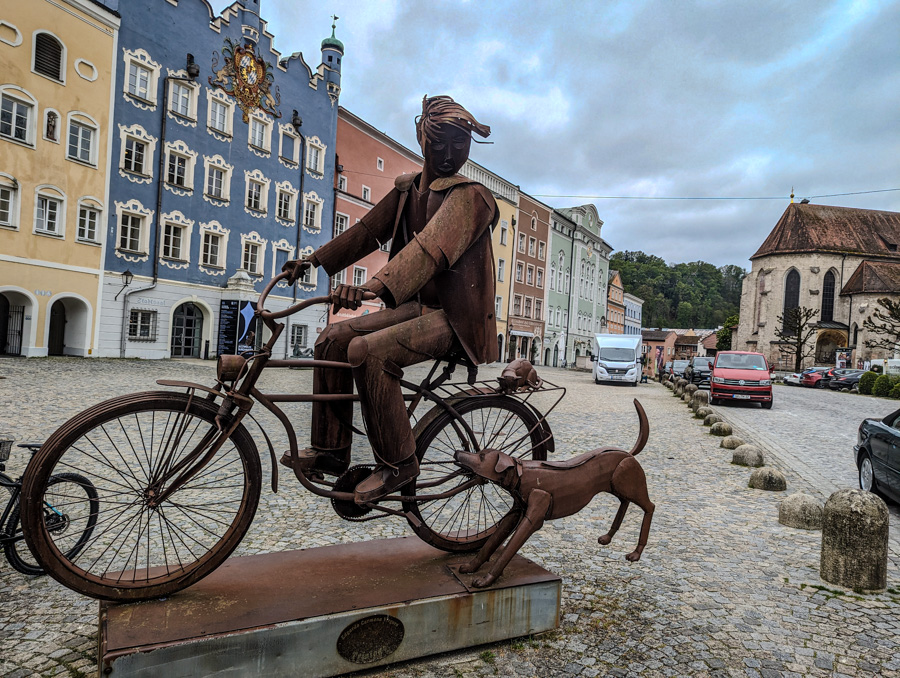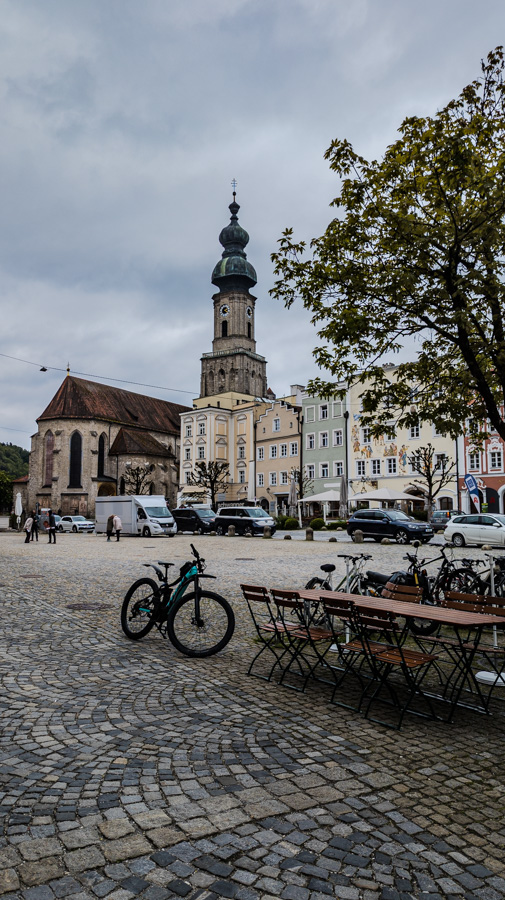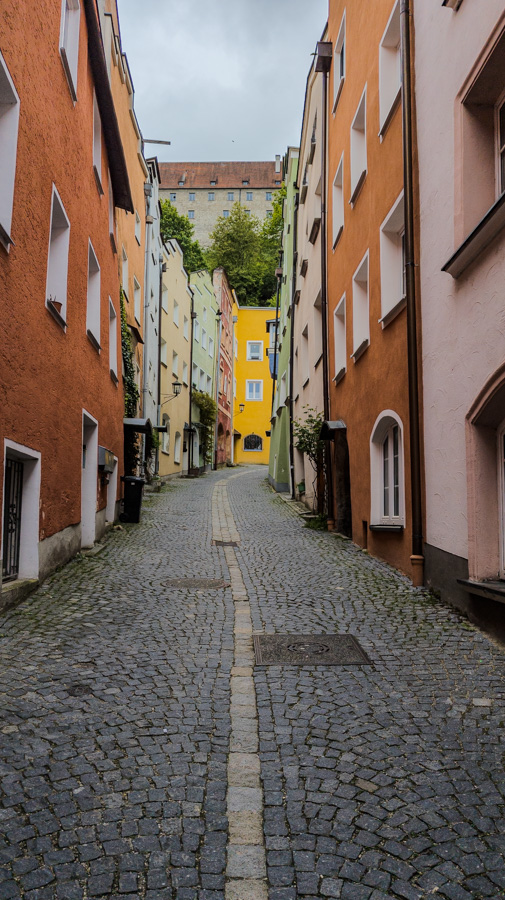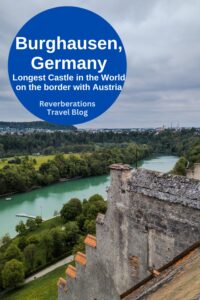Nothing captures attention like a superlative. But do they always measure up? When it comes to Burghausen, the longest castle in the world, it does. The imposing castle complex sits atop a hill in Bavaria, Germany overlooking the crystal-clear Salzach River. On the other side of the river sits Ach, Austria.
While you could hardly call a large castle on a hill a secret, for tourists Burghausen flies a bit under the radar compared to nearby attractions. As a result, a day trip from Munich or Nuremberg allows for an adventure exploring the castle complex, taking in the views, and experiencing the charming Altstadt of the German town at the bottom of the hill.
Brief History of Burghausen Castle
Burghausen Castle appears first in the historical record in 1025. However, the site has been occupied since at least the Bronze Age with additional evidence of Celtic and Roman settlements.
In 1164, Henry the Lion (then known as the Duke of Saxony) controlled the castle. But by 1180, he was tried in absentia for insubordination and stripped of his lands. This allowed the Bavarian Wittelsbachs to step in.
Less than a century later, the town became the second residence of the Lower Bavarian dukes, meaning the region grew in importance. While the dukes’ official seat was in Landshut, the castle was a safe residence for the ducal heir, the duchesses, and their children. The heavily reinforced castle also served as a safe place to store their wealth: gold and silver.
Over the subsequent centuries, the castle and the town of the same name at the bottom of the hill continued to expand. The dukes of Bavaria-Landshut strengthened the castle’s fortifications to encompass the entire hill upon which it sits. Duke Georg of Bavaria completed the castle’s expansion, making it the strongest fortress in the area.
Part of the area’s value was its role in the salt industry. Salt was shipped by boat along the Salzach. It was then brought on land at Burghausen to continue its journey.
But any castle worth its salt (pun intended) has to withstand some attacks. The castle was modernized in the 16th century due to threats from the Ottoman Empire. It was involved in the fighting and sustained damage during the Napoleonic Wars.
The Numbers on the Longest Castle in the World
The fortifications built over the centuries helped make Burghausen Castle the longest castle in the world. So how long is it? It measures in at 1051 meters (that’s over 3448 feet or more than a half mile), features five courtyards, and most of the walls remain intact.
Visiting Burghausen
Within the walls of the castle, it feels like a park. No doubt, centuries ago it was nowhere near as manicured or calm. Benches and trees dot the area alongside clock towers and small churches. The castle complex atop the hill is free and open to the public. There you can stroll past and through the historic fortifications.
There are spots along the way where you can peek over the walls and survey the picturesque views. On the east side of the complex, the Salzach River and the Austrian side of the valley; on the west side, the Wöhrsee Lake, with a park for watersports and other outdoor activities.
There are a few cafes within the walls of the castle and Vattl’s alter Laden, a charming shop selling medieval housewares and crafts.
Burghausen Main Castle
Within the thick outer stone walls of the main castle are several museums, such as the State Castle Museum and the Burghausen Town Museum, that allow you to get a look inside the building.
The State Castle Museum allows visitors to see inside the ducal apartments and imagine what they may have looked like once upon a time using recreated staging with period furnishings. It also includes the State Gallery, which houses two floors of art dating to the 16th century.
From the museum, you can also head upstairs to a viewing platform on the top of the castle that offers stunning views in all directions as the wind whips around you. The platform shows just how remarkable the castle is, and the access and knowledge the unparalleled views provide to keeping the castle and town safe.
The Bavarian Palace Department manages the museum. Those looking to visit several of the palaces and castles under their management can potentially save money with a Bavarian palace pass.
Just across the courtyard is the Burghausen Town Museum. The museum offers a closer look at the people of Burghausen and what life was like in the late Middle Ages. The modern museum includes many hands-on exhibits to engage visitors of all ages.
In a tower overlooking the lake, there is also a torture museum in what was once an actual torture chamber. At the northern end of the complex is a photography museum, documenting the history of the photographic medium. (Because these museums are not managed by the Palace Department, they are not included as part of the palace pass.)
Burghausen Altstadt
From the Burg zu Burghausen, as the castle is known in German, the Burgsteig walkway leads down to the town of Burghausen. At the bottom of the castle hill on the river-side is the town of Burghausen, with a colorful Altstadt and predictably hilly streets.
The Altstadt encompasses all of the charm you expect from small towns in Bavaria. The buildings sport pastel colors and a few murals and there are narrow alleyways and cobblestone streets.
For a meal or a drink, the Augustiner Brückenwirt is a friendly restaurant with hearty Bavarian fare. For further adventures, a nearby bridge leads across the Salzach and into the Austrian town of Ach.
Getting There
With public transit, it takes patience to reach Burghausen but region trains (RE) run regularly. Trains from Munich, Nuremberg, or Salzburg make a connection in Mühldorf. Depending on the train, it’s roughly a 30- to 40-minute ride from there. The town’s train station is close to the Altstadt and about a 20-minute walk to the castle.
Driving from Salzburg is relatively direct, via the B20 in Germany or B156 to local roads in Austria. From Munich in the west, there is the A94 to Marktl; from Nuremberg in the north, take the A9 to the A94.
Save this post for later with Pinterest!
All photos, as well as opinions, are my own. This post contains affiliate links.
